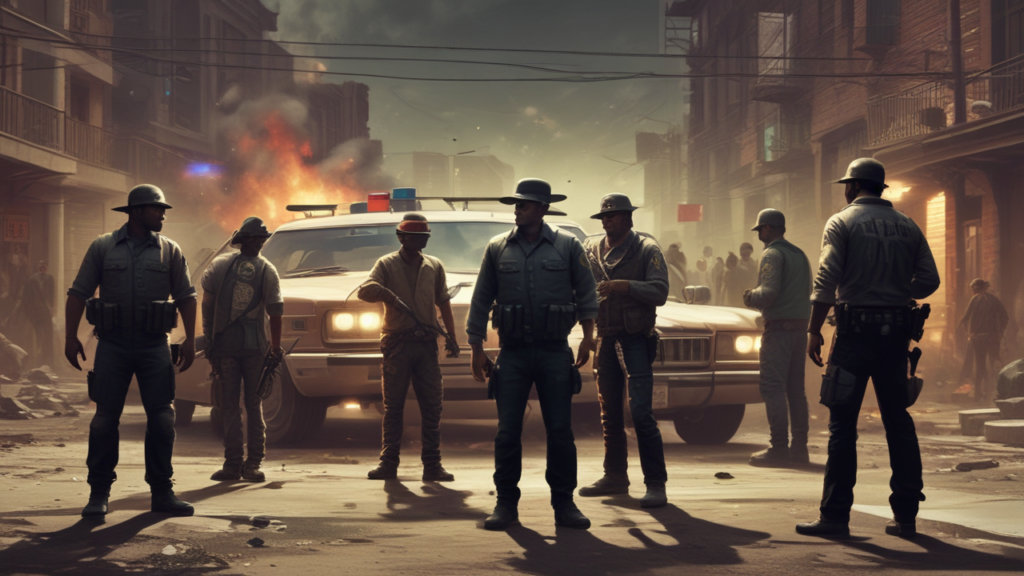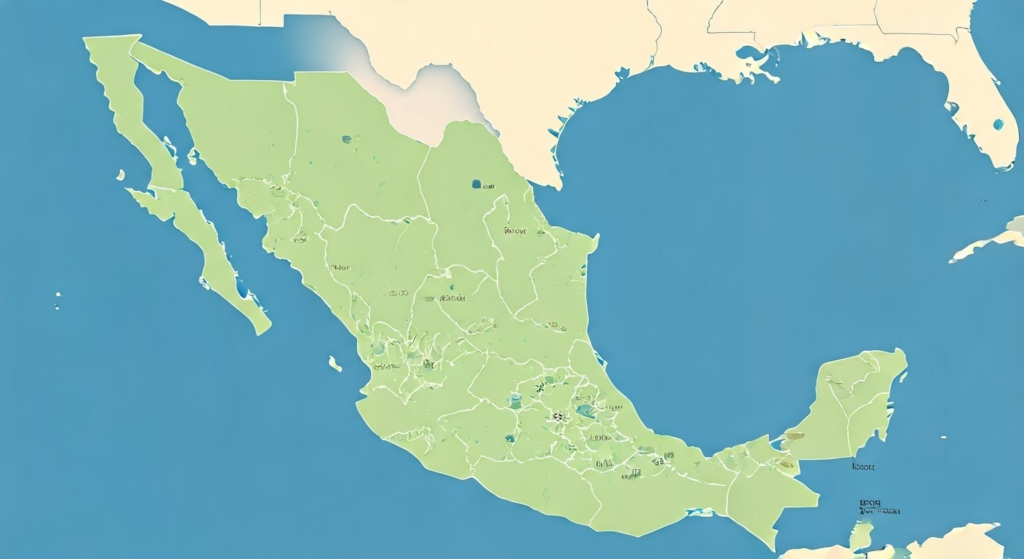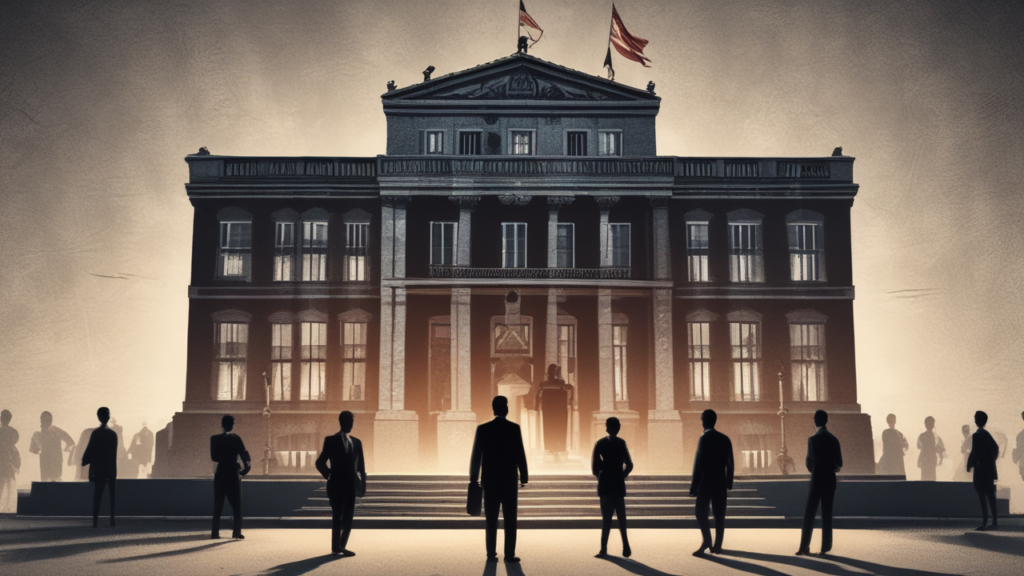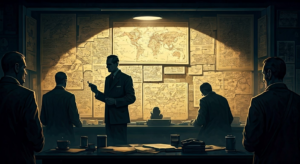Mexican Cartels and Illicit Trade: Drug Cartels Exposed
Exposed: Illicit Trade from Mexican Cartels Drugs Unveiled

Key Highlights
- Mexico's drug cartels in northern Mexico are major suppliers of illicit drugs to the United States, fueling violence and corruption.
- Key cartels include the Sinaloa Cartel and the Jalisco New Generation Cartel (CJNG), known for their vast networks.
- Drug trafficking generates billions of dollars, enabling cartels to influence politics and control territories.
- The human cost of the drug war is immense, with countless lives lost and communities devastated.
- Efforts to combat the cartels involve both the Mexican and U.S. governments, but the challenges remain significant.
Introduction
Mexican cartels have greatly affected public health and safety. They are involved in widespread drug trafficking in the United States. This illegal trade has led to a rise in addiction and violence. It has caused serious harm in both countries. This blog post will explore how these powerful criminal groups operate, their effects on society, and the efforts to take them down.
The Rise of Drug Cartels in Mexico

The rise of Mexican drug cartels is a mixed story. It involves many different historical, economic, and political factors. These criminal groups started small but have gained a lot of power. Their impact is now felt deep within Mexican society and even beyond.
Several things came together to help the cartels grow. High levels of poverty, weak government, and a growing demand for drugs in the United States helped them expand. Also, Mexico’s location is important. It sits at the point between drug production in South America and many people in America who buy drugs. This makes Mexico a key place for drug trafficking.
Historical roots and evolution of cartels
The history of organized crime in Mexico goes back to the early 1900s. At that time, smuggling groups took advantage of the alcohol prohibition in the United States. The need for illegal alcohol created a lot of money, which later helped the rise of the drug trade.
As Mexico grew economically, drug cartels took advantage of weak law enforcement and bad governance, making their power even stronger. They expanded their businesses, getting involved in legal companies and institutions by using corruption and fear. This helped them sink deep into the economy and politics of the country.
As time went on, these crime groups changed. They dealt with changing politics and different law enforcement tactics. They faced internal fights and rivalries, sometimes breaking apart and other times coming back together. Their desire for power and money never stopped. Each change in their structure brought more violence as they fought for control over drug routes and areas.
Key figures and factions within the Illicit Trade from Mexican cartels drugs
The Mexican drug trade is marked by changing partnerships and fierce rivalries, particularly in the fentanyl trade. It is controlled by tough drug traffickers who run large criminal networks, often under scrutiny from the Narcotic and Dangerous Drug Section. From the well-known Sinaloa Cartel to the growing threat of CJNG, these groups work in a dark world filled with violence and greed.
Leading these networks are notorious figures. Joaquín "El Chapo" Guzmán, the former leader of the Sinaloa Cartel, showed the great power and reach of these organizations. His violent reign and shocking prison breaks caught the world's attention, showing how strong these criminal groups are.
Even when efforts are made to take down these networks, new leaders appear from the dark, ready to make their mark in the profitable drug trade. The breaking apart of cartels often leads to more violence, as groups fight for power. This struggle leaves a bloody path, hurting communities and putting law enforcement agencies under pressure around the world.
Major Cartels and Their Territories
The Mexican drug trade is complicated and always changing. Many cartels compete for power and influence. These groups often act without fear of punishment. They have a lot of control over certain areas by using violence, corruption, and connections in the community.
To understand the drug war better, it is important to know how the cartels divide their territories and where they are strong. This section will look at two of the most powerful and important players in the Mexican drug trade: the Sinaloa Cartel and the Jalisco New Generation Cartel (CJNG).
Sinaloa Cartel: A global powerhouse
The Sinaloa Cartel is a powerful name in the global drug trade. It started in the rough mountains of northwestern Mexico and became a major player in the international drug market by obtaining precursor chemicals for drug production. This criminal group is known for its wide reach and harsh methods. It has caused a lot of violence worldwide due to drugs like heroin and has impacted international affairs while also making it hard for law enforcement agencies to do their jobs.
The power of the Sinaloa Cartel comes from its strong network. This network goes from the coca fields in South America to the streets in big cities all over the world. Their skill in managing logistics and distribution has improved over many years. This ensures a constant supply of drugs across borders. This constant flow brings in huge profits that help keep their operations running and strengthen their power.
Even after capturing and sending their famous leader, Joaquín "El Chapo" Guzmán, to prison, the Sinaloa Cartel is still very strong. Its loose structure allows different groups to work independently, but they all still pledge loyalty to the main goals of the cartel.
Jalisco New Generation Cartel (CJNG): The rapid rise to power
The Jalisco New Generation Cartel (CJNG) is quickly gaining power among Mexican cartels. This criminal group is known for its smart operations and wide reach. They are making a big impact on drug trafficking in both Mexico and the United States. CJNG is involved in the illegal drug trade and other wrong actions. This has caught the eye of law enforcement agencies, raising worries about public health and national security. The swift rise of this cartel shows how complicated organized crime is and the tough job law enforcement has in fighting these criminal networks.
The Economics of Drug Trafficking
The drug trade is a huge global business worth billions of dollars. It involves a complicated system of making, selling, and using drugs. This business brings in enormous profits. These profits help criminal groups continue their illegal actions. They wash this dirty money through different ways, which then mixes into real economies, including those in India. This can make it hard for law enforcement to do their job.
This section will look at how Mexico's drug cartels make money. It will cover how they manage their large amounts of illegal money and the negative effects their actions can have on the global economy.
How cartels finance their operations
The financial activities of Mexican drug cartels are very complicated. They mix illegal deals with honest businesses. This makes it very hard to follow where their stolen money goes. Money laundering is essential for cartel operations. It helps them look legitimate while hiding their crime roots.
Cartels use many clever methods to get their money into the global financial system. They create shell companies and use offshore accounts. They also invest in harmless-looking places like real estate, restaurants, and more. By doing this, they find ways to clean their dirty money, making it tough to tell the difference between crime and legal business.
Corrupt officials and professionals often help in these financial actions. Some are tempted by the chance to get rich, while others are threatened. This corruption weakens important institutions, causes loss of trust, and harms the law, which helps the cartels maintain their power.
The role of money laundering in cartel business
Money laundering is not only about hiding the origins of illegal money. It is very important for cartels. It helps them keep their operations going, grow their power, and look legitimate. By mixing their illegal money with the regular economy, they hurt economic development and lose public trust.
When dirty money enters the financial system, it messes up the markets, raises prices, and creates unfair competition for honest businesses. It also reduces tax income, taking away money that governments need for important public services like healthcare, education, and infrastructure. This creates a cycle of inequality and unstable conditions.
Additionally, cartel money can harm the trustworthiness of financial organizations, making them easy targets for crime. This threatens the stability of the whole global financial system. The fight against money laundering is not only a matter for law enforcement. It is necessary to protect economic development and encourage transparency and accountability in the global financial system.
Cartel Influence on Politics and Society

The reach of cartel influence goes beyond just the drug trade. It stretches into politics and society, breaking down the rule of law and creating a climate full of fear and lawlessness. Corruption, driven by huge amounts of drug money, affects all parts of the government. This weakens democratic institutions and decreases people's trust.
Cartels use bribery, intimidation, and violence to control local police and high-ranking officials. This creates a widespread atmosphere of fear that makes people afraid to speak out. It also makes it difficult to hold cartels accountable for their actions.
Corruption within government institutions
Corruption is a harmful problem that damages the heart of a fair and equal society. It grows in places where strong criminal groups, like Mexican drug cartels, are active. These cartels use their large illegal profits to influence government agencies. This puts pressure on officials at every level and threatens national security.
They bribe police to ignore drug shipments or even influence elections to their advantage. This way, cartels bend the political system to meet their needs. As a result, people lose trust in the government, and the rule of law becomes weaker. This creates a situation where these criminal organizations can thrive without fear.
The bad impact of cartel power can reach the highest levels of government. It can make decision-making harder and stop effective leadership. This can result in rules that help criminals, which only strengthens their power and makes it tougher to shut down their operations.
Impact on local communities and culture
Beyond the news about violence and corruption, the harmful influence of drug cartels affects local communities. It leaves a lasting mark on culture, impacting daily life and harming social unity. Fear becomes a common feeling, controlling choices and keeping people quiet.
In places affected by the drug war, life rarely feels normal. Extortion, kidnappings, and disappearances create a scary reality. This leads to ongoing worry and distrust. Children see all kinds of violence. Their young lives are damaged by trauma and the constant threat from the cartels.
The cultural effect of cartels includes glorifying violence and normalizing crime. The chance for quick money and power, often shown in narcocorridos (drug ballads) and pop culture, can encourage young people to get involved. This cycle continues, fueling more violence and crime.
The Human Toll of the Drug War
The human cost of Mexico's drug war is hard to measure. It is a sad mix of many stories filled with loss, fear, and broken lives. Behind the numbers are regular people caught in violence that seems endless.
Families are being separated by this conflict. Communities live under constant fear. The war on drugs has created deep scars that affect the country’s feelings and thoughts. This part will look at the serious effects of the fentanyl epidemic and the broader opioid epidemic and this ongoing issue. It will focus on the human cost that often gets overlooked amid news about seizures and cartel arrests.
Casualties in the battle against cartels
The fight against drug cartels has taken a heavy toll. Many people have lost their lives, highlighting the harsh truth of this ongoing conflict. Human rights violations are sadly common. Both cartels and corrupt officials act without fear of punishment, causing widespread harm that affects many more than just the victims.
Those who suffer are not only linked to the drug trade but also innocent civilians caught in harm's way. Events like massacres, forced disappearances, and unfair killings have sadly become ordinary, creating a strong sense of fear that silences voices of protest. Public health is hit hard too, with communities facing the pain caused by violence, the rise of illegal guns, and the constant threat of addiction.
The mental toll of this conflict is deep. Children grow up amidst violence, transforming their neighborhoods into warzones, leaving them feeling unsafe. The lasting effects of this trauma touch individuals and society in many ways.
Displacement and humanitarian crises
The ongoing violence from fighting cartels has caused a serious humanitarian crisis in Mexico, driving many illegal immigrants and families to flee their homes in search of safety. These internal refugees often live in poor conditions, without basic needs like shelter, healthcare, and education.
Displacement makes existing problems worse, pushing vulnerable groups even further away from society. Losing homes, jobs, and community connections can hurt physical and mental health, especially in children and the elderly.
This crisis has strong public health effects. Overcrowded shelters and bad sanitation can lead to the spread of illness. The emotional harm from violence and losing homes can leave lasting effects on people and communities. This situation can create ongoing cycles of poverty, violence, and instability.
Efforts to Combat the Cartel Menace
Fighting the complex problem of Mexican drug cartels needs a thorough and ongoing plan. This plan should tackle not just the violence but also the main issues that let these crime groups grow. To break down these networks, there should be strong law enforcement, changes in the legal system, and focused social programs.
This section will look at the different methods used by both the Mexican and U.S. governments to fight the cartel threat, emphasizing the secure communication methods, such as HTTPS. It will highlight the challenges involved and the need for better international teamwork to deal with this worldwide issue.
Mexican government strategies and challenges
The Mexican government has a big problem with drug cartels. This issue is tied to corruption, national security, and the need for big social changes, which have resulted in an alarming number of homicides. Mexico is working closely with the U.S. Drug Enforcement Administration (DEA) and the Secretary of Homeland Security. They have made great progress in catching high-ranking cartel leaders, shutting down drug labs, and taking away large amounts of drugs.
Despite these wins, the fight comes at a cost, leading to more violence as cartels break apart and fight for control of valuable drug routes. Corruption in government and law enforcement makes it hard to move forward. This helps the cartels operate without much fear.
Solving this tough problem needs a solid plan. It’s important to make the courts stronger, change law enforcement agencies, and tackle the social issues that draw people to the drug trade. Also, making government actions more open and accountable is key. This can help rebuild trust with the public and create an environment where the law is respected.
U.S.-Mexico collaboration and its effectiveness
Recognizing that the drug trade is a shared problem requiring collaborative solutions, the U.S. and Mexican governments have engaged in a long-standing partnership with law enforcement partners, including homeland security investigations, aimed at disrupting cartel operations, stemming the flow of narcotics across borders, and strengthening law enforcement capacities in Mexico City. This collaboration, encompassing intelligence sharing, joint operations, and financial assistance, is a cornerstone of U.S. foreign policy towards Mexico.
The U.S. has committed billions of dollars in aid through initiatives like the Mérida Initiative, providing training, equipment, and technical assistance to Mexican counterparts. While this support has yielded some successes in disrupting cartel operations, questions remain about its long-term effectiveness in addressing the root causes of the drug trade.
| U.S.-Mexico Collaboration Efforts | Key Objectives | Key Challenges |
|---|---|---|
| Mérida Initiative | Strengthen Mexican law enforcement and judicial institutions | Corruption, human rights concerns, limited impact on reducing drug flow |
| Kingpin strategy | Target and apprehend high-level cartel leaders | Fragmentation of cartels, increased violence, emergence of new leaders |
| Intelligence sharing and joint operations | Disrupt drug trafficking networks and apprehend key figures | Lack of trust between agencies, leaks of information, concerns over sovereignty |
Conclusion
In conclusion, understanding Mexico's drug trade helps us see the challenges caused by cartels. From their history to the serious harm they cause, we cannot ignore how these cartels affect politics, society, and economies. Fighting this problem needs different strategies and teamwork from around the world. By looking deeper into this issue, we can hope for a future where drug cartels lose their power. This way, communities can grow without fear. Explore more about the drug trade in Mexico in our FAQs.
Frequently Asked Questions
How do cartels smuggle drugs into the United States?
Mexican cartels use different ways to smuggle illegal drugs into the United States. They take advantage of weak points in border protection. Some methods they use are complex tunnels, sea routes, hiding drugs in cars, and dropping shipments with small airplanes or drones. This creates a big problem for stopping drug trafficking.
What has been the role of U.S. policies in shaping the drug trade?
U.S. drug policy focuses a lot on banning and enforcing laws around drugs. This has affected how drug trafficking works. The White House, amid the ongoing tariffs debate, works with Mexico and the US government to reduce the supply of drugs. However, the demand for drugs in the U.S. is still a big factor. This demand influences how much trafficking happens and how much money people can make from it.
Can legalizing drugs reduce cartel violence?
The discussion around legalizing some drugs focuses on reducing violence. People think it could help by lowering cartel profits and moving control to regulated markets. However, there are concerns about how effective this really is. Those in favor point out the benefits for public health. On the other hand, those against it worry that drug use might actually go up.
https://doi.org/10.1016/j.jdeveco.2019.102433
https://insightcrime.org/mexico-organized-crime-news/mexico
https://www.nytimes.com/2025/02/18/us/politics/cia-drone-flights-mexico.html
https://insightcrime.org/news/takeaways-return-familia-michoacana

